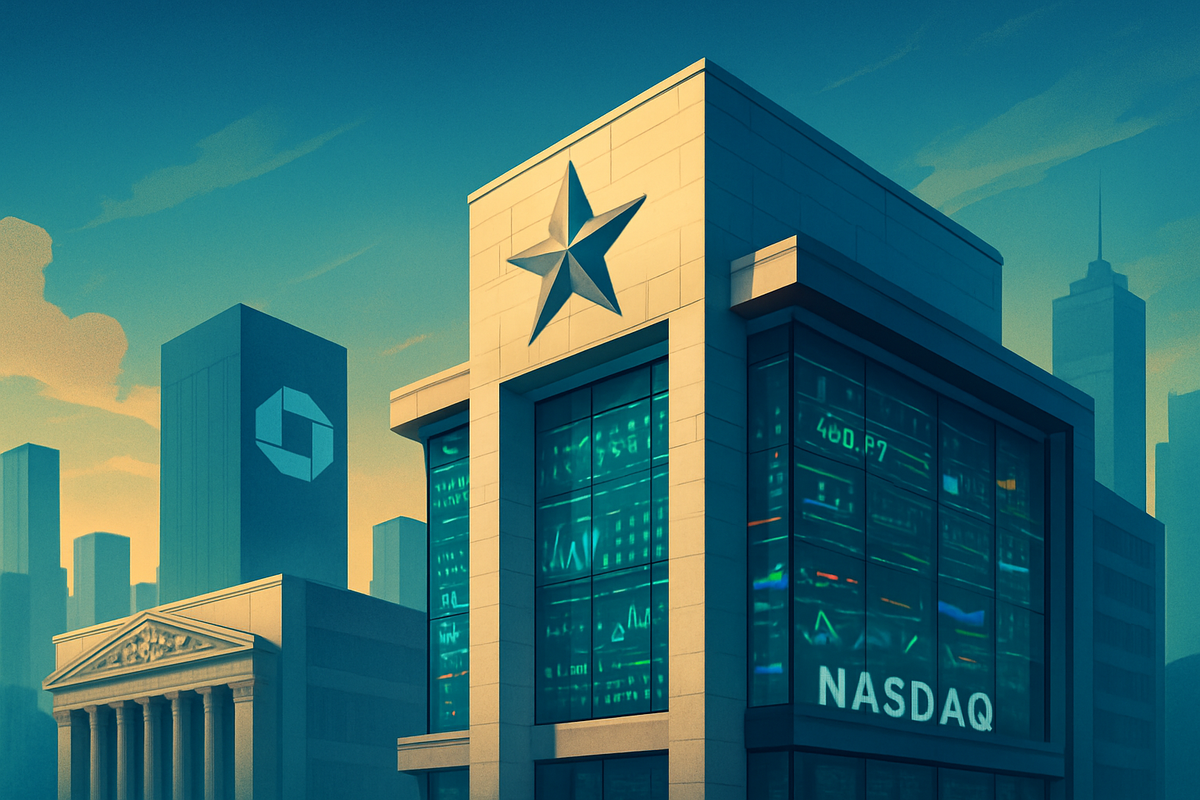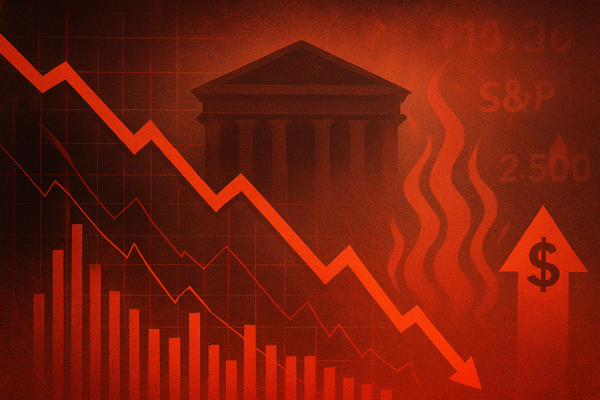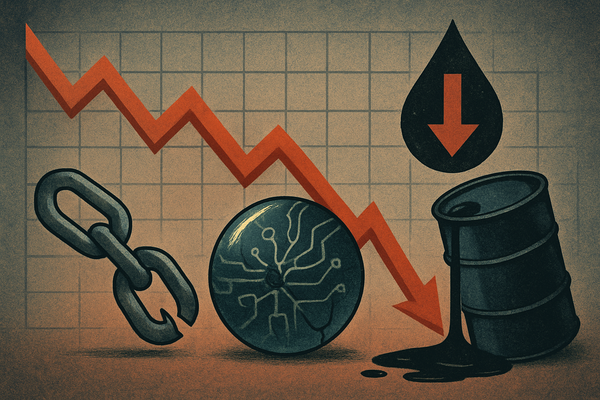JPMorgan Dives Deep: $90 Million Investment Fuels Texas Stock Exchange, Igniting Battle for Market Dominance

In a bold move set to reshape the landscape of U.S. equity markets, JPMorgan Chase & Co. (NYSE: JPM) has announced a significant $90 million strategic investment in the nascent Texas Stock Exchange (TXSE). This pivotal financial injection, revealed today, October 31, 2025, positions the Wall Street titan at the forefront of a challenge to the long-standing duopoly held by the New York Stock Exchange (NYSE) and Nasdaq. The investment signals a powerful endorsement for the Dallas-based exchange, which aims to offer a more competitive and issuer-friendly alternative for public listings and trading.
The immediate implications are profound: a major financial player is actively backing a new entrant designed to disrupt established market infrastructure. This move could catalyze a new era of competition, potentially driving down costs for companies seeking to go public and fostering innovation in trading technologies and services. For investors, it introduces a new variable into the equation of market dynamics, suggesting a future where choices for listing and trading may expand beyond the traditional behemoths.
A New Frontier: Detailing the TXSE's Ascent and JPMorgan's Strategic Backing
JPMorgan Chase & Co. (NYSE: JPM) has led a formidable group of investors in committing $90 million to the Texas Stock Exchange, marking a critical milestone for the ambitious venture. The TXSE, headquartered in Dallas, Texas, is not just another regional exchange; it aspires to be a national securities exchange, offering a fully electronic trading platform while maintaining a physical presence to host traditional listing ceremonies with a distinct "Texas flair." This hybrid approach aims to blend modern efficiency with established market traditions.
The path to this moment has been carefully laid. Just last month, on September 30, 2025, the U.S. Securities and Exchange Commission (SEC) granted its crucial approval for the TXSE to operate as a national securities exchange. This regulatory green light was a monumental step, making the TXSE the first new, fully integrated U.S. stock exchange to receive such approval in decades. Leading up to this, the TXSE had already secured approximately $161 million in investments from a diverse group of institutional investors by January 2025, including prominent names like BlackRock, Citadel Securities, and Charles Schwab (NYSE: SCHW). JPMorgan's investment today significantly bolsters this financial foundation, underscoring strong confidence from the financial industry in the TXSE's viability. The exchange is now on track to commence trading services, exchange-traded products (ETPs), and corporate listings in the second half of 2026.
The TXSE's formation is largely driven by a perceived dissatisfaction among companies with the escalating compliance costs, regulatory burdens, and high fees associated with listing on existing major exchanges. Texas, with its rapidly expanding economy—now the world's eighth-largest—and a business-friendly environment that has attracted numerous Fortune 500 headquarters, provides a fertile ground for such an initiative. The TXSE Group's leadership, comprised of market veterans, is committed to an issuer-centric approach, promising more cost-effective and less intrusive listing alternatives while maintaining stringent listing standards focused on quality. Initial market reactions suggest a cautious optimism, with many seeing the TXSE as a much-needed injection of competition into a concentrated market.
Shifting Tides: Potential Winners and Losers in the New Exchange Era
The emergence of the Texas Stock Exchange, significantly bolstered by JPMorgan's (NYSE: JPM) investment, is poised to create a distinct set of winners and losers within the financial ecosystem. Foremost among the potential winners are companies seeking public listings. Businesses, particularly those in rapidly growing sectors or those based in Texas and the broader southern U.S., could find the TXSE's promise of lower listing costs, streamlined regulatory processes, and a more issuer-friendly environment highly attractive. This could include a wide array of private companies looking to go public, as well as existing public companies considering dual listings or even migrating their primary listings. The TXSE Group itself stands to gain substantially, potentially capturing a significant share of new listings and trading volume, thereby validating its disruptive business model.
JPMorgan Chase & Co. (NYSE: JPM) is a clear winner through its strategic early investment. By backing the TXSE, JPMorgan diversifies its financial market infrastructure investments and positions itself to potentially influence the development of a new major exchange. This could offer the bank strategic advantages in future trading services, clearing, and advisory roles related to TXSE listings. Other early investors like BlackRock (NYSE: BLK), Citadel Securities, and Charles Schwab (NYSE: SCHW) also stand to benefit from the TXSE's growth and potential market share capture. Furthermore, the state of Texas and its burgeoning financial sector will likely see increased job creation, investment, and prestige as Dallas solidifies its position as a major financial hub.
Conversely, the most immediate "losers" in this scenario are the New York Stock Exchange (NYSE), operated by Intercontinental Exchange (NYSE: ICE), and Nasdaq (NASDAQ: NDAQ). For decades, these two exchanges have enjoyed a near-monopoly on U.S. equity listings, allowing them significant pricing power and control over market infrastructure. The TXSE's direct challenge, backed by substantial capital and regulatory approval, threatens to erode their market share in new listings and potentially draw away existing ones. This increased competition could force NYSE and Nasdaq to re-evaluate their fee structures, compliance requirements, and service offerings, putting pressure on their revenue streams and profitability. While their established liquidity and global recognition will ensure their continued dominance for the foreseeable future, the TXSE represents a credible threat that cannot be ignored.
Broader Significance: Reshaping Market Infrastructure and Competition
JPMorgan's (NYSE: JPM) $90 million investment in the Texas Stock Exchange is far more than just a financial transaction; it's a significant inflection point that highlights several broader industry trends and carries substantial implications for the future of market infrastructure and competition. This event perfectly aligns with the growing decentralization of financial hubs within the United States. For years, New York has been the undisputed capital, but states like Texas and Florida have been actively attracting financial institutions and talent with business-friendly policies, lower costs, and a burgeoning economic base. The TXSE's establishment in Dallas is a powerful testament to Texas's rise as a legitimate financial center, challenging the traditional East Coast dominance.
The move also underscores a persistent demand for alternatives to established monopolies. The U.S. equity market has long been criticized for its duopolistic structure, which some argue has led to higher costs and less innovation than a truly competitive environment might foster. The TXSE aims to capitalize on this sentiment, offering an alternative that promises lower costs and a more issuer-centric approach. This could trigger a ripple effect, compelling NYSE (NYSE: ICE) and Nasdaq (NASDAQ: NDAQ) to innovate further, potentially leading to more competitive pricing, streamlined listing processes, and enhanced services across the board. The pressure from a credible new entrant could ultimately benefit all market participants.
From a regulatory and policy perspective, the SEC's approval of the TXSE on September 30, 2025, is highly significant. It signals a willingness by regulators to foster competition and potentially diversify market infrastructure, moving beyond the entrenched incumbents. This could set a precedent for future regional or specialized exchanges to emerge, creating a more fragmented but potentially more resilient and innovative market landscape. Historically, the U.S. has seen various attempts at new exchanges, but few have gained national traction. The TXSE, with its substantial backing and clear regulatory path, stands a much stronger chance, drawing comparisons to past periods of market evolution where new trading venues emerged to meet changing demands.
What Comes Next: Navigating a New Era of Market Dynamics
The road ahead for the Texas Stock Exchange, now significantly bolstered by JPMorgan's (NYSE: JPM) investment, will be closely watched by the entire financial industry. In the short term, the TXSE Group's primary focus will be on the meticulous preparations for its planned launch in the second half of 2026. This includes building out its technological infrastructure, finalizing its operational protocols, and, crucially, attracting its initial cohort of corporate listings. The success of these early listings will be paramount in establishing credibility and demonstrating the TXSE's value proposition to a broader market. We can expect aggressive outreach to companies, particularly those in Texas and the surrounding regions, highlighting the benefits of a new, potentially more cost-effective listing venue.
In the long term, the ultimate success of the TXSE hinges on its ability to attract sufficient liquidity and trading volume to become a viable alternative to NYSE (NYSE: ICE) and Nasdaq (NASDAQ: NDAQ). This will involve a sustained effort to build trust among institutional investors and retail traders alike. Potential strategic pivots for the TXSE might include specializing in certain types of listings, such as energy companies or tech firms, or offering innovative trading products that differentiate it from its established rivals. For existing exchanges, the challenge will be to adapt to this new competitive environment, potentially by re-evaluating their fee structures, enhancing their services, or even exploring strategic partnerships.
Market opportunities that may emerge include new investment products tied to TXSE listings, and increased competition among market makers and brokers to service the new exchange. However, significant challenges remain, including overcoming the network effects that benefit established exchanges (where liquidity begets more liquidity), and proving that the TXSE can offer the same level of market integrity and investor confidence. Potential scenarios range from the TXSE becoming a niche player for regional listings, to it evolving into a significant national exchange that fundamentally alters the U.S. market structure. The coming months will be critical in shaping these outcomes.
Wrap-Up: A New Chapter in U.S. Equity Markets
JPMorgan Chase & Co.'s (NYSE: JPM) $90 million investment in the Texas Stock Exchange marks a watershed moment, signaling a serious challenge to the entrenched duopoly of NYSE (NYSE: ICE) and Nasdaq (NASDAQ: NDAQ). The key takeaways from this development are clear: a major financial institution is throwing its weight behind a new, disruptive force in market infrastructure, driven by a perceived need for greater competition and more issuer-friendly options. The SEC's recent approval and the substantial capital raised underscore the seriousness of the TXSE's ambitions and its potential to reshape how companies go public and trade their shares in the U.S.
Moving forward, the market is poised for a more competitive landscape. While NYSE and Nasdaq possess formidable advantages in terms of liquidity, brand recognition, and established ecosystems, the TXSE represents a credible threat that could force them to innovate and potentially adjust their business models. This increased competition is, ultimately, a positive development for the broader financial market, potentially leading to lower costs, greater efficiency, and more diverse options for companies and investors.
The lasting impact of this event could be a paradigm shift in U.S. equity markets, moving towards a more decentralized and competitive structure. Investors should closely watch the TXSE's progress in the coming months, particularly its ability to attract initial listings and build trading volume ahead of its planned launch in the second half of 2026. The reactions and strategic responses from the incumbent exchanges will also be critical indicators of how this new chapter in financial market history unfolds. The battle for market dominance has just begun, and Texas is at its heart.
This content is intended for informational purposes only and is not financial advice



